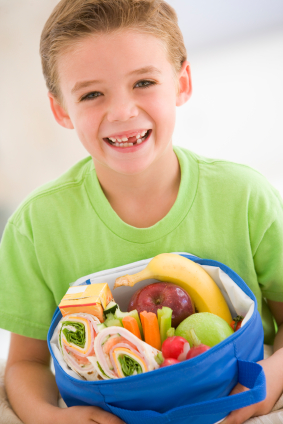What will become of the humble lunchbox?
Last week the government called upon head-teachers to ban lunchboxes and encourage children to eat free school dinners instead, claiming they are consistently less nutritious and contribute to the 20% of children who leave primary school obese
The recent government commissioned report by Leon restaurant chain founders Henry Dimbleby and John Vincent found that just 1% of packed lunches were as nutritious as school meals.
Findings in the latest Kantor data apparently show that healthy elements such as fruit and yoghurt have seen a slide in their category share, whilst products such as biscuits, crisps and pastry products have all seen a rise.
It doesn’t seem all that long ago that Jamie Oliver was all over British TV screens telling us all how unhealthy school dinners were. The infamous ‘Turkey Twizzlers’ – the poster child of the school dinner campaign – proved to all of us that most school dinners were inadequate in terms of nutritional value.
No doubt, many parents heeded this advice and likely invested in lunchbox staples to give their children a more balanced alternative.
But we are now informed that the humble lunchbox is the new villain in town – or more to the point – the products inside.
Last year there were 4.2 billion lunchbox occasions, an absolutely huge market. Children’s lunchboxes make up 29% of this market – so you can see what a ban on packed lunches would mean to kid’s lunchbox brands
But before any talk of blanket bans take place, lunchbox consumption amongst children is already down 2.1% over the last year.
Perhaps even more telling is the 9.2% slump amongst primary school children.
Without wanting to ring too many alarm bells – something needs to be done to address this before it is too late.
Asda’s soft drinks manager Steve Newbould, who has accused suppliers of letting down Asda’s mums asks: “Why are we still seeing kids’ lunchbox items with extra sugar in? Why aren’t we taking it out?” he demanded. “The lunchbox offer doesn’t meet our customers’ needs.”
It is an interesting point – what are customer’s needs?
Many lunchbox brands have diversified their offerings, with smaller ‘snack pack’ varieties. These allow parents to control portion sizes, and subsequent calorie intake.
Burton’s Biscuit brand, Wagon Wheels was re-launched with a new pack design and improved recipe in 2012 and have seen sales rise 75.5%
However, calorie control and nutrition are 2 very separate issues. Given that the government focus is firmly focused on nutrition, it seems that many lunchbox brands have a job on their hands to convince the powers that be otherwise.
The fastest growing of the top 10 lunchbox foods are cereal bars – up 7.4% in the last 12 months and probably the most biggest indicator for changing lunchbox habits as people try to shift their consumption to healthier choices.
Natural balance foods says that sales of its Nakd brand are up a whopping 57%
So a shift is certainly happening – but it will be a challenge for biscuit, cake and chocolate brands to demonstrate their ‘healthier’ credentials.
Given the size of the kids lunchbox market – over 1 billion lunchbox occasions each year – lunchbox brands need to work hard to battle such damning recommendations.
If health is the most important factor that drives consumption (25.3% of food choices) then brands must play on these.
They need to communicate to both parents and the government that their products offer more than just taste and convenience.
They need to prove to everybody that they have put the health of their customers first.
To achieve this – lunchbox brands will need to do more than create smaller pack sizes. they need to demonstrate their credentials and focus on offering greater levels of nutrition and overall health and wellbeing.
Price promotions alone simply will not cut it. More ambitious plans are needed when the government is talking about banning lunchboxes altogether.
Brands need to create and develop brand experiences that show a caring side, a human side to what they do and offer.
There are plenty of opportunities for brands to show their concern for children’s well-being and it doesn’t need to happen in front of a supermarket either.
All over the country, children events and activity centres offer brands an opportunity to engage with both parents and children alike.
By taking their marketing away from heavily competitive environments, they can stand out and be heard. The key here is achieving positive word of mouth on and offline.
By sponsoring family events and occasions, brands can truly communicate to a captive audience of their ideal target audience. They can own the occasion and, if they can do this – they have a shot at owning future purchasing decisions.



